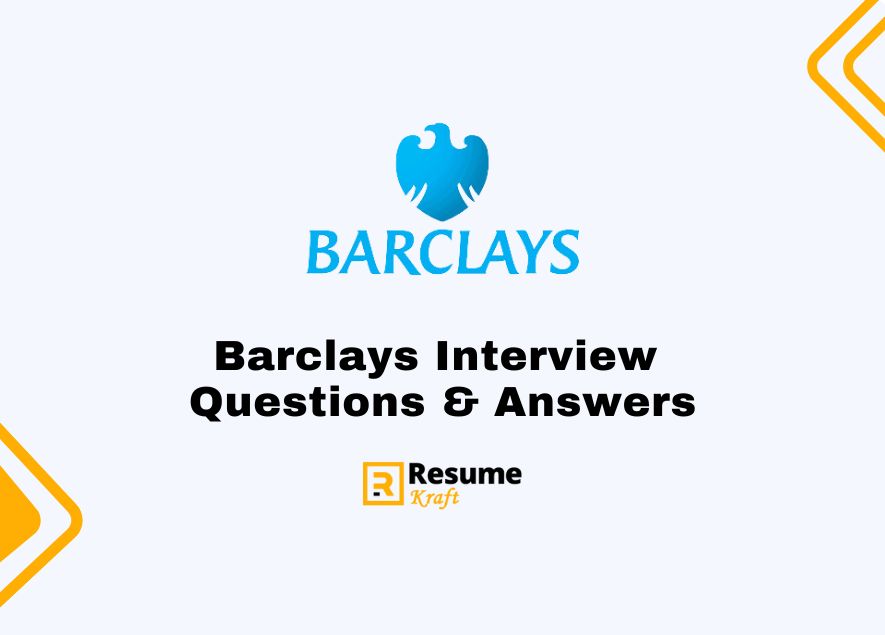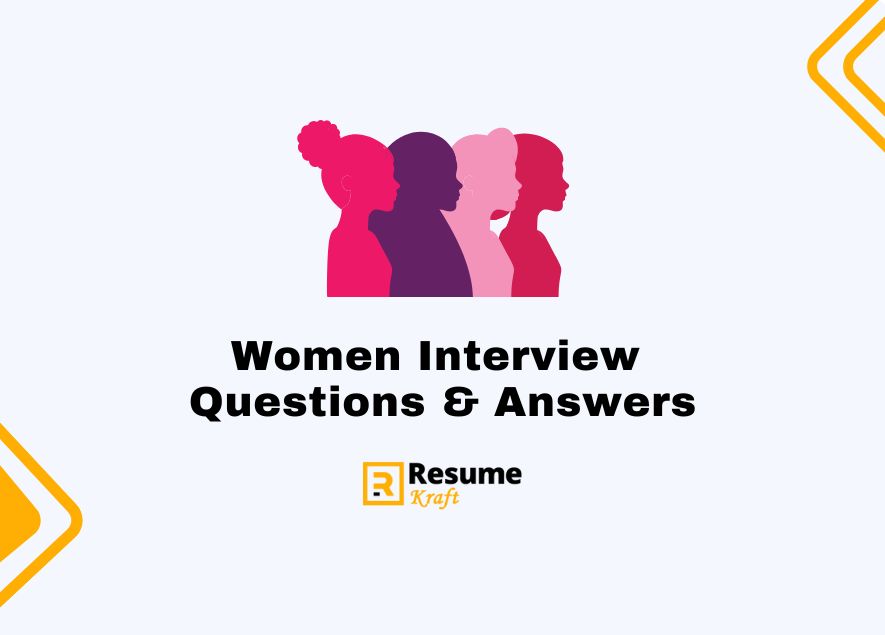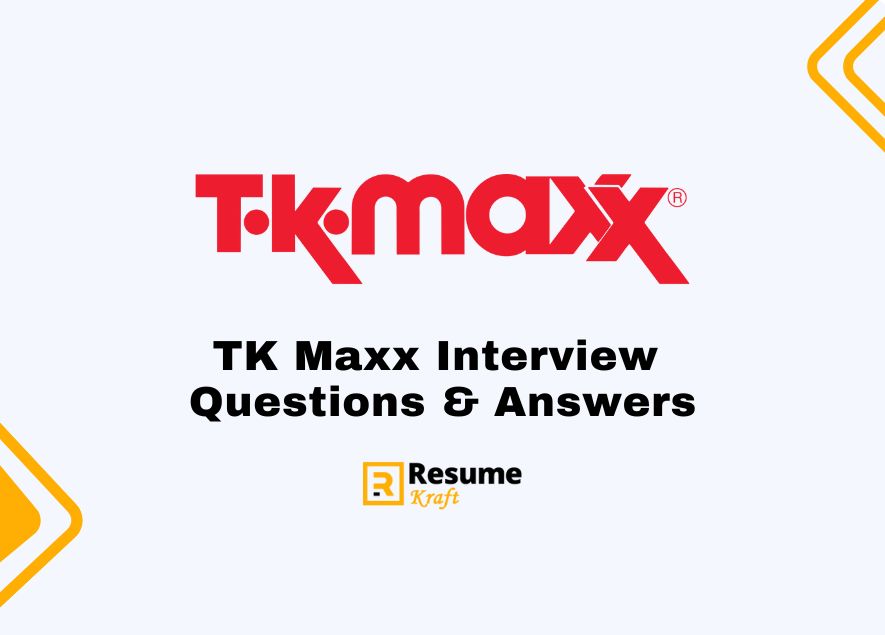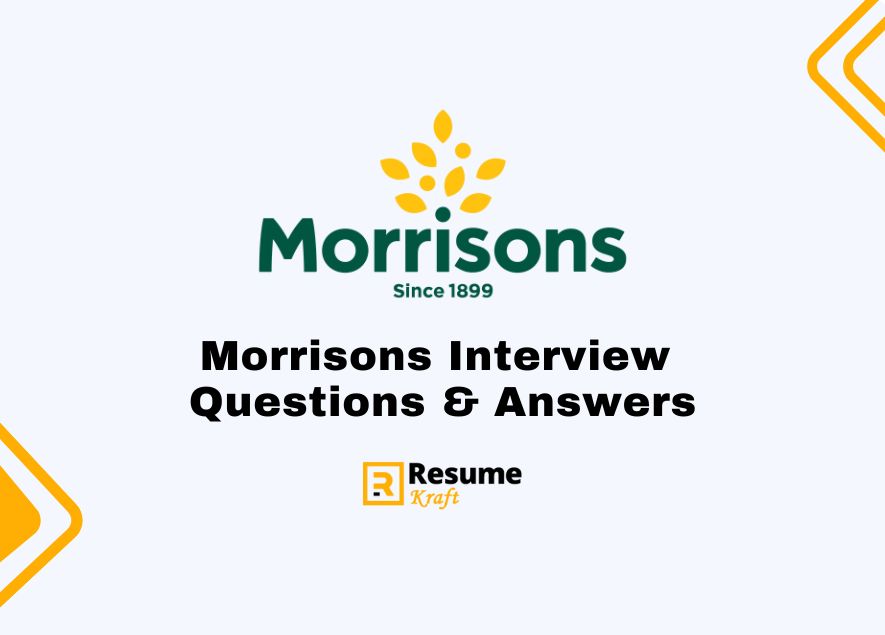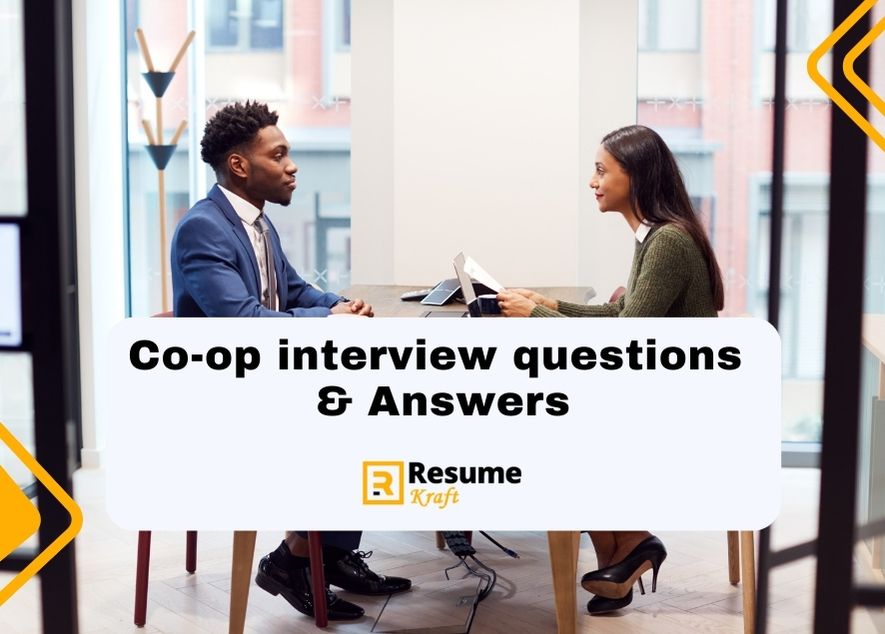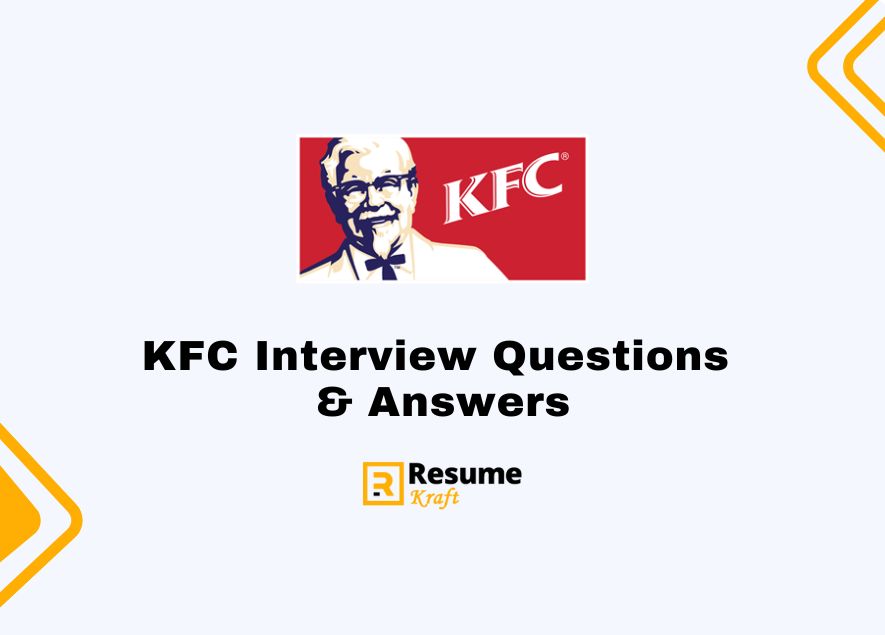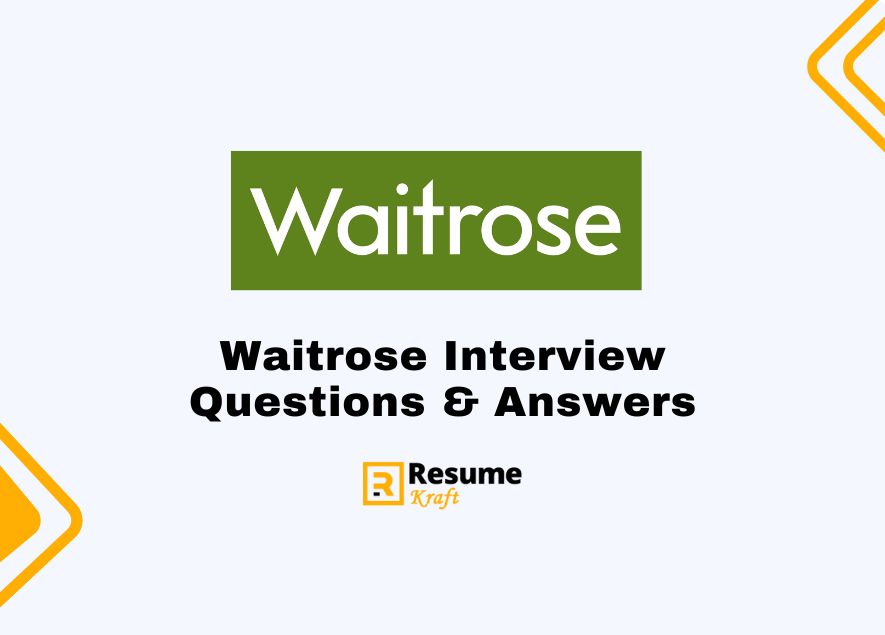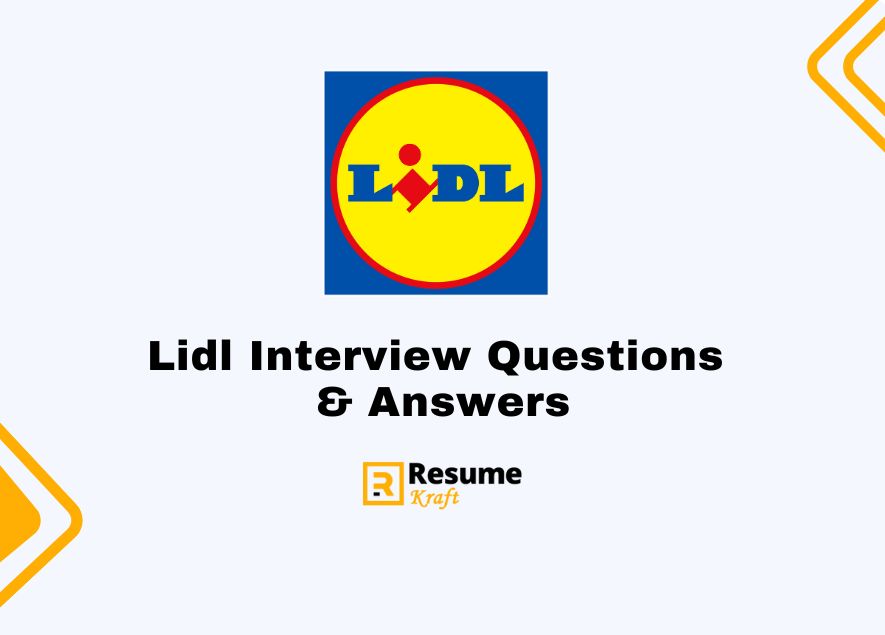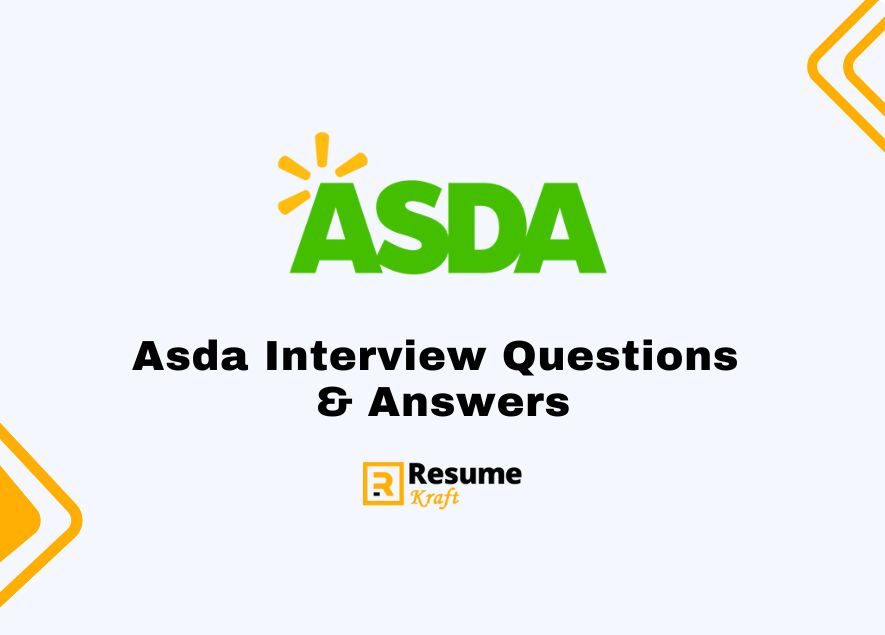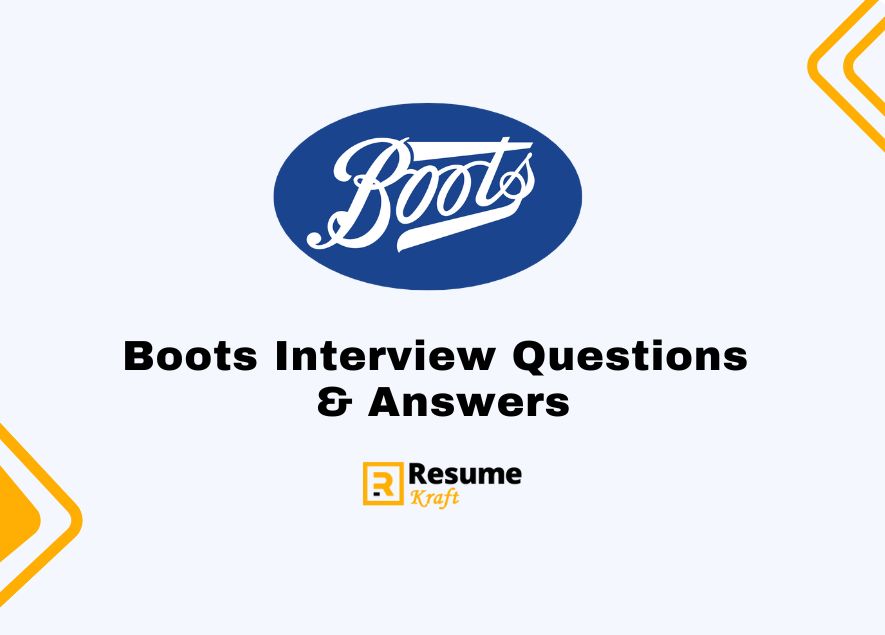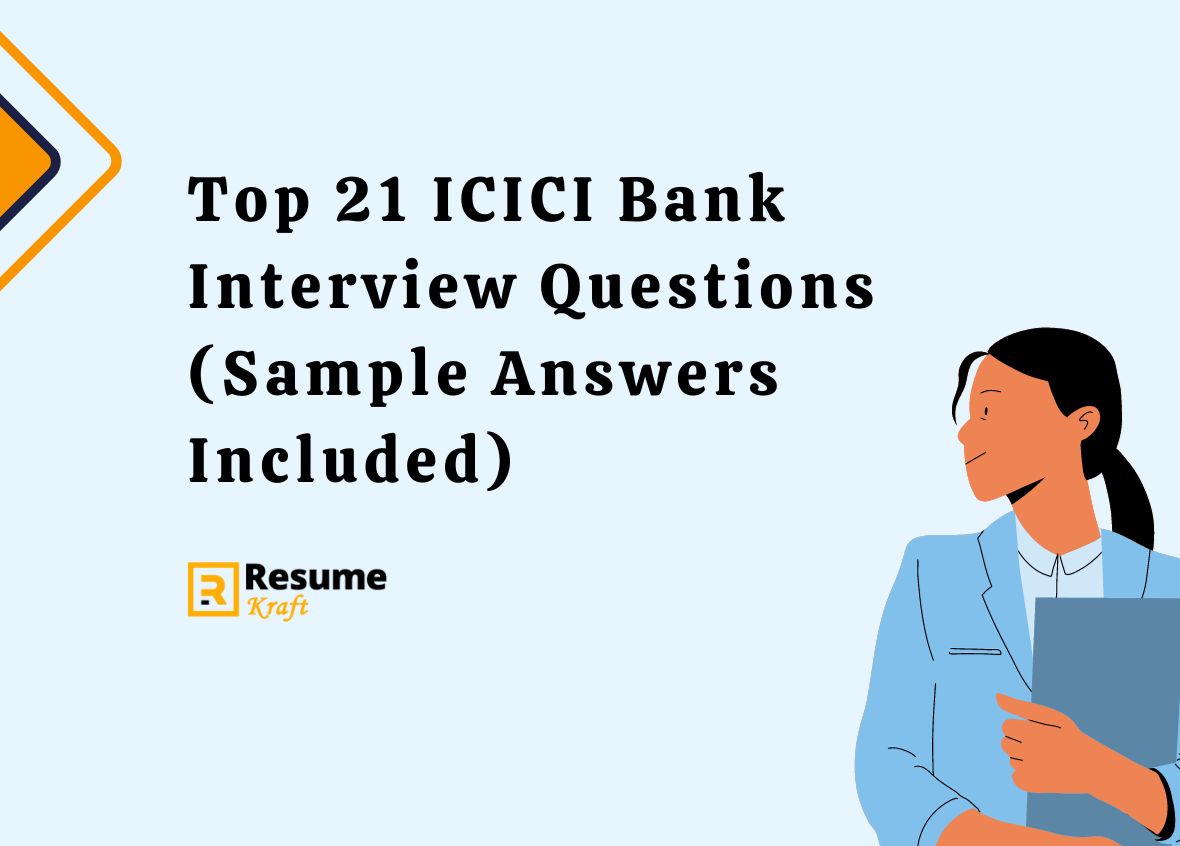
Top 21 ICICI Bank Interview Questions (Sample Answers Included)
ICICI Bank, one of India’s largest and most renowned private sector banks, has always stood out for its innovation, commitment to customers, and comprehensive suite of banking products. With a presence across multiple countries, ICICI Bank is synonymous with trust, integrity, and excellence in banking.
As a leading financial institution, ICICI Bank attracts top talents who aspire to contribute to the bank’s growth while carving out a successful career for themselves. This article aims to guide those candidates through their ICICI Bank interview preparation by providing the top 21 ICICI Bank interview questions, along with thoughtfully crafted sample answers.
- About ICICI Bank
- 1. Can you tell us about yourself?
- 2. Why do you want to work for ICICI Bank?
- 3. What do you know about ICICI Bank’s products and services?
- 4. How would you handle a dissatisfied customer?
- 5. Describe a time when you worked in a team to achieve a common goal.
- 6. How do you stay updated with financial trends and industry news?
- 7. What is your experience with sales, and how do you approach meeting targets?
- 8. How do you handle stress and high-pressure situations?
- 9. Can you describe a time when you made a mistake and how you handled it?
- 10. What motivates you in your work?
- 11. Why should ICICI Bank hire you?
- 12. How do you approach problem-solving?
- 13. What is your understanding of ICICI Bank’s core values?
- 14. Can you describe a challenging project or situation you handled at work?
- 15. How do you define success?
- 16. How would you contribute to ICICI Bank’s mission and vision?
- 17. How do you handle feedback and criticism?
- 18. How do you prioritize your tasks and manage your time?
- 19. What are your career goals, and how does ICICI Bank fit into them?
- 20. How do you stay motivated during repetitive tasks?
- 21. How would you describe your leadership style?
About ICICI Bank
ICICI Bank is headquartered in Mumbai, Maharashtra, India. Established in 1994, the bank has expanded its footprint globally, offering an array of services such as retail banking, corporate banking, investment banking, and asset management. Its commitment to customer satisfaction and technological advancement continues to set new benchmarks in the financial industry.
Top 21 ICICI Bank Interview Questions and Answers
1. Can you tell us about yourself?
I’m a finance graduate with three years of experience working in customer service within the banking sector. My passion lies in helping clients navigate complex financial products, and I see myself thriving in ICICI Bank’s innovative environment.
Sample Answer
“I have a Bachelor’s degree in Finance and three years of experience in customer service in the banking sector. I’m passionate about helping clients understand financial products, and I believe ICICI Bank’s commitment to innovation aligns perfectly with my career goals.”
2. Why do you want to work for ICICI Bank?
ICICI Bank’s reputation for customer satisfaction and technological innovation sets it apart from other banks. Being part of a team that values collaboration and continuous improvement is an exciting prospect for anyone aspiring to work in the banking sector.
Sample Answer
“I want to work for ICICI Bank because of its reputation for customer satisfaction and technological innovation. I believe in the bank’s mission to offer tailored solutions to its clients, and I see myself thriving in an environment that values collaboration and continuous improvement.”
3. What do you know about ICICI Bank’s products and services?
Understanding ICICI Bank’s products and services is essential for interacting with clients effectively. Knowledge of the bank’s offerings, from personal banking to investment services, demonstrates a candidate’s preparedness for the role.
Sample Answer
“I know that ICICI Bank offers a wide range of products and services, including savings and current accounts, credit cards, loans, investment products, and insurance services. Their focus on digital banking and innovative solutions like iMobile app reflects the bank’s commitment to customer convenience.”
4. How would you handle a dissatisfied customer?
Customer satisfaction is paramount at ICICI Bank. Being able to handle dissatisfied customers with empathy, patience, and effective problem-solving skills reflects your ability to uphold the bank’s values.
Sample Answer
“I would listen to the customer’s concerns carefully, empathize with their situation, and assure them that I’ll do my best to resolve the issue. I would then investigate the problem and provide a solution, keeping the customer informed throughout the process. If necessary, I would escalate the issue to a supervisor, ensuring a satisfactory resolution.”
5. Describe a time when you worked in a team to achieve a common goal.
Teamwork is a core value at ICICI Bank, and sharing an example of successful collaboration showcases your ability to contribute positively to a team dynamic.
Sample Answer
“In my previous role, I worked with a team to develop a new customer engagement strategy. We collaborated on ideas, delegated tasks based on strengths, and maintained open communication. The result was a 25% increase in customer satisfaction scores, achieved through our collective effort.”
6. How do you stay updated with financial trends and industry news?
Keeping up with industry trends and news reflects a candidate’s dedication to professional growth and ability to adapt to changes in the banking sector.
Sample Answer
“I stay updated with financial trends by subscribing to leading financial news sources, attending webinars and industry conferences, and participating in relevant online forums. I also engage with my professional network to discuss new developments and insights.”
Build your resume in just 5 minutes with AI.

7. What is your experience with sales, and how do you approach meeting targets?
Sales skills are often essential in banking roles. Sharing your approach to meeting targets provides insight into your goal-oriented mindset and determination.
Sample Answer
“I have two years of experience in sales, working in a target-driven environment. I approach sales by understanding customer needs, offering tailored solutions, and following up to ensure satisfaction. My methodical approach has helped me consistently meet and exceed my targets.”
8. How do you handle stress and high-pressure situations?
The ability to remain composed under pressure reflects your resilience, problem-solving skills, and professionalism—all vital attributes for a role at ICICI Bank.
Sample Answer
“I handle stress by focusing on the task at hand, breaking it down into manageable parts, and prioritizing my efforts. I also believe in taking short breaks and maintaining a positive mindset to stay productive in high-pressure situations.”
9. Can you describe a time when you made a mistake and how you handled it?
Discussing a mistake shows your ability to take responsibility and learn from your experiences, aligning with ICICI Bank’s culture of accountability and growth.
Sample Answer
“I once made an error in processing a loan application, which led to a delay. I acknowledged the mistake, informed the customer, and worked overtime to correct it. I also implemented a checklist to prevent such errors in the future.”
10. What motivates you in your work?
Understanding what drives you gives the interviewer insight into your alignment with ICICI Bank’s mission and how you might fit within the team.
Sample Answer
“I’m motivated by the opportunity to help people navigate financial decisions. Knowing that I can make a difference in someone’s financial well-being and contribute to the success of ICICI Bank drives me to excel in my work.”
11. Why should ICICI Bank hire you?
This question allows you to highlight your unique skills and experiences that make you an ideal fit for ICICI Bank.
Sample Answer
“ICICI Bank should hire me because of my extensive experience in customer service, my understanding of financial products, and my commitment to continuous learning. I believe my proactive approach and ability to work collaboratively align with the bank’s values, making me an excellent fit for the role.”
12. How do you approach problem-solving?
Your approach to problem-solving reveals your analytical skills, creativity, and ability to handle challenges, all of which are vital in the banking sector.
Sample Answer
“I approach problem-solving by first analyzing the issue to understand its root cause. Then, I brainstorm potential solutions, considering their feasibility and impact. I choose the best option after careful evaluation and implement it, monitoring the results to ensure success.”
13. What is your understanding of ICICI Bank’s core values?
Understanding the core values of ICICI Bank shows that you have done your homework and are aligned with the bank’s mission and culture.
Sample Answer
“ICICI Bank’s core values include integrity, commitment to excellence, customer focus, and teamwork. These values guide the bank’s operations, ensuring that it maintains its reputation for quality service and ethical practices.”
14. Can you describe a challenging project or situation you handled at work?
Sharing an example of a challenging project provides insights into your resilience, adaptability, and ability to thrive in demanding situations.
Sample Answer
“I once led a project to implement a new banking software within a tight deadline. Despite initial challenges, I coordinated with various teams, resolved conflicts, and ensured that the project was completed on time and within budget. My determination and leadership skills were key to the project’s success.”
15. How do you define success?
Your definition of success can offer a glimpse into your values, work ethic, and alignment with ICICI Bank’s goals.
Sample Answer
“I define success as achieving personal and professional goals while maintaining a positive work-life balance. Success also means contributing positively to my team and organization, constantly learning, and growing in my career.”
16. How would you contribute to ICICI Bank’s mission and vision?
This question gives you the opportunity to articulate how your skills, values, and experiences align with ICICI Bank’s overarching goals.
Sample Answer
“I would contribute to ICICI Bank’s mission and vision by providing exceptional customer service, collaborating effectively with my team, and constantly seeking ways to innovate and improve processes. My alignment with the bank’s core values and my dedication to professional growth would drive my contributions.”
17. How do you handle feedback and criticism?
Your ability to accept and utilize feedback reflects your willingness to learn and grow, an essential quality for a role at ICICI Bank.
Sample Answer
“I value feedback and criticism as opportunities to learn and improve. I listen carefully, ask questions to understand the perspective, and make necessary changes to enhance my performance. I believe in continuous growth and see feedback as a vital part of that process.”
18. How do you prioritize your tasks and manage your time?
Time management and prioritization are key skills in the fast-paced banking environment, and your approach to these can reveal your efficiency and effectiveness.
Sample Answer
“I prioritize my tasks based on urgency and importance, using tools like to-do lists and digital planners. I set realistic deadlines, break tasks into smaller steps, and monitor progress to ensure timely completion. Regular reflection on priorities helps me manage my time effectively.”
19. What are your career goals, and how does ICICI Bank fit into them?
Aligning your career goals with ICICI Bank’s opportunities showcases your long-term vision and commitment to a future with the bank.
Sample Answer
“My career goal is to become a leader in the banking sector, specializing in digital innovation. ICICI Bank’s emphasis on technology and continuous growth offers the perfect platform for me to learn, contribute, and advance towards achieving this goal.”
20. How do you stay motivated during repetitive tasks?
Maintaining motivation during repetitive tasks reflects your perseverance and focus, qualities that are appreciated in a banking role.
Sample Answer
“I stay motivated during repetitive tasks by setting clear goals, tracking progress, and rewarding myself for milestones. Understanding the importance of the task and its contribution to the larger goal helps me maintain focus and energy.”
21. How would you describe your leadership style?
Your leadership style gives insights into how you would lead a team within ICICI Bank, highlighting attributes such as collaboration, empathy, and vision.
Sample Answer
“I describe my leadership style as collaborative and empathetic. I believe in involving team members in decision-making, providing clear direction, and offering support and encouragement. I strive to create an environment where everyone feels valued and empowered to contribute.”
6 Good Questions to Ask at the End of a Bank Interview
- What is the bank’s strategy for growth in the coming years?
- Can you describe the team’s culture and dynamics?
- What are the primary opportunities for professional development within the department?
- How does ICICI Bank maintain its competitive edge in technology and customer service?
- Can you share more about the onboarding process for new employees?
- What are the next steps in the interview process?
Conclusion
Preparing for an ICICI Bank interview requires understanding the company’s values, banking strategies, and customer service philosophy. By focusing on teamwork, adaptability, and alignment with ICICI Bank’s mission, you can confidently approach your interview and make a lasting impression. Utilize resources like AI Resume Builder, Resume Design, Resume Maker, Resume Samples, Resume Examples, Resume Skills, Resume Help, Resume Synonyms, Career Advice, Interview Questions, and Job Responsibilities to enhance your preparation.
By focusing on teamwork, adaptability, and alignment with ICICI Bank’s mission, you can confidently approach your interview and make a lasting impression. Good luck!

Build your resume in 5 minutes
Our resume builder is easy to use and will help you create a resume that is ATS-friendly and will stand out from the crowd.

